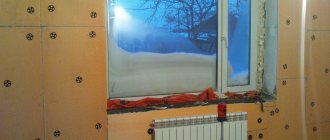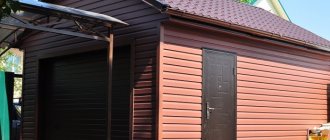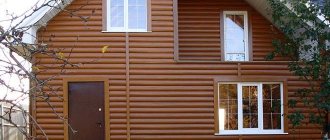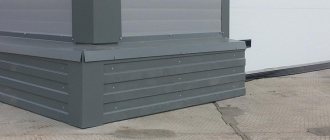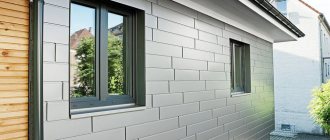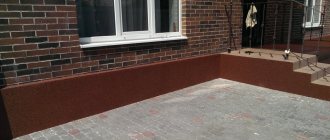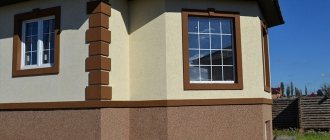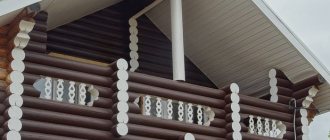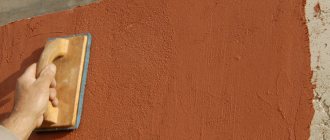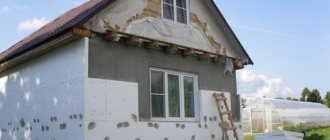When the construction of a brick house is nearing completion, the owner faces many questions related to interior decoration and design creation. The first thing to think about is which brick wall finish is best?
What material should be preferred so that a comfortable microclimate is maintained in the room, and the interior pleases residents and guests? There are a lot of options here, each of them has advantages and disadvantages. It is important to weigh the pros and cons when choosing.
Types of finishing of the facade of a brick house
The huge variety of finishing materials offered makes it possible to choose the one that meets the requirements of the home owner. Among the finishing methods, there are traditional options, for example, plaster followed by painting, facing bricks, lining, etc. There are completely new technologies that use the latest wall materials that have recently appeared on the market. For example, thermal panels.
Let's look at each material separately and briefly talk about the methods of its application or installation.
Plaster
This is the most traditional option for finishing a brick house. Until recently, cement or lime based plaster was used for this purpose. The compositions were prepared directly at the construction site, mixing the components with the addition of water. Today this is not done, because the production of so-called dry mixtures has been established, where the ingredients of the composition are combined in precise proportions, which corresponds to the high quality of the material.
Dry mixtures are simply diluted with water in the required ratios, which are indicated on the packaging of the plastering material. Therefore, it will not be possible to spoil the plaster with incorrect actions.
Plastered facade of a brick house Source m.yukle.mobi
It should be noted that manufacturers today offer several types of plaster compositions, one of them is facade. This is what is used for finishing houses built from bricks or blocks. It confirms its name by the fact that it has special qualities:
- high moisture resistance and frost resistance
; - good strength characteristics
; - good vapor permeability
, which allows the walls
of a brick house to “breathe
”.
Manufacturers today offer several varieties of facade plaster, which differ from each other in the ingredients included in the mixture.
- Acrylic plaster
. This is a cement-sand mixture to which acrylic (polymer) is added. It has excellent diffusion ability and high plasticity, which simplifies its application to walls, but this variety has a short service life, of course, in comparison with other types. - Calcareous
, also
as mineral
.
Essentially, it is a mixture of three components: cement, sand and lime. Today it is the cheapest plaster
on the market.
Lime-cement plaster for external work Source torgdom-shop.ru
- Silicate variety
. It received its name only because the solution contains liquid glass as a binding component. But the base is still the same lime. - Silicone
. This is the most expensive plaster composition, but it works out its price one hundred percent. That is, the layer applied to brick walls withstands natural loads and mechanical stress well, it is a moisture-resistant material, so it can be washed to remove dust and dirt. Typically, walls plastered with silicone material are washed with water pressure. Added to the advantages is a huge variety of colors, which makes it possible not to use finishing painting.
Silicone ready-to-use plaster Source el.decorexpro.com
Method of applying plaster
In fact, this is not an easy process. It consists of several operations that require a professional approach. Here is the sequence of their implementation:
- prime or moisten
the brick wall; - they install beacons
along which
the wall surface will have to be leveled
; - is applied in several layers
, the number of which is determined
by differences in the plane
of the brick wall; - after drying, the beacons are dismantled
, and their installation site is filled with
plaster mortar
; - grind
the surface completely using
a liquid
plaster solution.
Plastering the facade of a brick house Source hu.aviarydecor.com
Facing brick
Decorating a house with bricks on the outside, meaning facing, is another traditional way to change the appearance of the facade of a building. This material is presented in a fairly wide range on the market. But at the core they are bricks with very precise dimensions, especially on the front side, and a smooth surface of the edges. At the same time, the facing brick on its planes does not have defects: cavities, pores, cracks and others.
Today, manufacturers offer facing bricks with cut or rounded edges, with patterns on the front surface, with cracks that imitate the antiquity of the material, and other types. As for the sizes, several options are offered here, where standard brick is still very popular.
Recommendation for choice. If a facing brick of non-standard sizes is chosen for finishing a brick house, then you need to understand that it will not coincide with the band of bricks used in the construction of the building. Therefore, during the cladding process it will be necessary to increase the thickness of the masonry seam.
Decorating a house with facing bricks Source tiilitalo.ru
As for the cladding method, first of all it is necessary to indicate that the foundation of the house will have to be increased in width, at least by the size of the thickness of the facing brick. And this must be taken care of at the stage of designing a house. That is, it turns out that facing a brick house with facing bricks is the cost of building a foundation. And, as practice shows, these costs are quite impressive.
If the task is to brick a house that is already in use, then you will have to use other more modern options for forming a base for brick cladding. One of them is the installation of brackets or planks that are attached to the wall of the building. Fasteners are usually made of durable plastic or galvanized steel.
Facing bricks of different colors Source conti-group.ru
See also: Catalog of companies that specialize in the full production cycle, and the design and construction of turnkey brick houses
Stone
Natural stone is a material that can be called the best option for cladding brick houses. And not only brick ones. It not only has a beautiful structure and unsurpassed appearance. This material is fire-resistant, with high strength characteristics. Easily withstands even significant shock loads.
It copes well with all natural loads. Moisture resistance – 100%. Durability is determined by centuries. Houses lined with natural stone claim a high degree of aristocracy and elegance.
True, it is necessary to point out that stone cladding is one of the most expensive. The process of decorating walls with stone requires professionalism; construction operations are very labor-intensive. In addition, a strong foundation needs to be poured under the stone. Other fastening methods are not acceptable. And one more thing - some types of stone emit radioactive waves. So you need to be careful when choosing this or that breed.
On the market, stone cladding is represented by tiles of different sizes, so-called torn stone or “crust”, chipped tiles.
Brick house trimmed with stone on the outside Source pofasadam.ru
Today, artificial stone, which is made on the basis of a cement mixture, is very popular. In terms of its characteristics, it is not inferior to natural stone, and its appearance is no less impressive. But it costs several times less. The cladding technology is exactly the same. The requirements for the foundation are the same.
Lining
This material also belongs to ancient finishing methods. Brick houses are usually not covered with it. It is a rarity. But sometimes this method is used if the walls of the house are difficult to repair and bring them to the required normal condition. And although today there are other similar materials on the market with higher performance characteristics, lining occupies its niche.
Tile material
There are several types of tile materials that are used for finishing houses built of brick.
Facade tiles
It's clinker. It is made using the same technology as brick. That is, clay is molded and fired. But clinker tiles are a thin material intended specifically for cladding.
House facade finished with clinker tiles Source kblok.ru
The advantages include:
- high frost resistance
; - good strength
characteristics; - variety of colors
; - the material does not fade under
the negative
influence of sunlight
; - moisture resistance
is high.
As for the disadvantages, the main one is the high price. You can add the fact that clinker tiles are afraid of impacts, under the influence of which they become unusable. But even with such nuances, this type of finish is very popular.
Clinker tiles to look like bricks in different colors Source gk-gss.ru
Ceramic tile
Today, many manufacturers offer ceramic tiles that fall into the “facade” category. This is a modern approach to solving the problem of finishing brick buildings. The advantages of this material include:
- a huge variety of design
; - the material has a low specific gravity
, so the loads from it on the walls of the house are insignificant; - If the installation is carried out correctly, you can guarantee the strengthening of the walls
; - the material is durable
,
moisture-resistant
,
fireproof
,
environmentally friendly
; - decorative
application
does not change
its external qualities under the influence
of sunlight
; - ceramics
easily
tolerate sudden changes in humidity and temperature
; - the smooth, low-porous structure
of the front side of the tiles creates conditions under which
neither dust
nor
dirt settles
on the finished surface; - easy to clean
with plain water; - Ceramic tiles easily tolerate
negative
chemical and bacteriological
effects.
The only negative is the complex technology of wall cladding, which requires the experience and qualifications of the work manufacturer.
Design of facade thermal panels
Ready-made blocks of thermal panels are intended for external decoration of buildings. But sometimes designers use them in interior spaces. Ready-made panels do not weigh down the walls and do not create excess pressure on the foundation.
Structurally, thermal panels have the appearance of a layer cake.
- The top layer is decorative. The layer pattern repeats brick or stone masonry. It also performs the protective functions of the main layer from the actions of nature.
- The main layer serves as thermal insulation. Expanded polystyrene and polyurethane foam are used for its production.
The panels are manufactured at the factory using the latest technology, using special matrices. High-precision connection of panels masks possible installation defects. Cold bridges are never created in the panels. The fastening is reliable and can withstand even the force of slanting rain.
Decorative panels with imitation stone or brick are in demand by consumers due to their decorative qualities. Imitation of natural stone is difficult to distinguish from masonry. And it is easy to care for - just clean it from dust once a year with a damp sponge. The panels have beveled hidden edges that provide a seamless finish. The type of stone finish is resistant to fading in bright sun. There are no scratches on it.
Brick-like thermal panels are popular and considered traditional. They are suitable for many structures and buildings. There are many proposals for choosing the color and texture of bricks. The color of the brick can be white, yellow, gray, red, terracotta. In appearance, aged or burnt, with a rough or smooth surface.
Video description
The video shows everything about facade ceramic tiles:
See also: Catalog of projects of brick houses with facade plaster
Porcelain tiles
Essentially, these are the same ceramic tiles only with higher strength characteristics. The thing is that porcelain stoneware is molded under high pressure. This material has increased density and, accordingly, greater weight.
It has the same advantages as ceramic tiles, but is almost twice as expensive. Today, porcelain stoneware is used not only for cladding the walls of brick houses using “wet” technology. That is, using adhesive compounds. But they install it using ventilated facade technology, for which they use special fasteners.
Real brick - solution for units
For obvious reasons, this option is suitable only for a few. If you value authenticity in your interior, there is no better solution than a wall made of real brick. But we must understand that such a wall can only appear if the building itself was built of brick.
In this case, we can get the texture and texture of the material by exposing it, stripping it of existing plaster or paint, revealing its true, rough and austere character.
Uniqueness, exclusivity, environmental friendliness and authenticity - an ideal solution for true connoisseurs
Cleaning an old surface from plaster is a labor-intensive process, but the result is truly impressive.
This solution can be used in old one-story or apartment buildings whose walls were built of brick.
… “Brick is a durable natural building material, it is resistant to mechanical damage, fire and moisture, while retaining heat well and fading little”...
Of course, someone persistent might suggest building a new interior wall adjacent to the existing one. Yes, the wall will be made of real brick, but this method of creating an interior has too many disadvantages.
Disadvantages of building a second wall from whole brick:
- Firstly, the new wall will not serve as the main one, that is, this already has a certain decorative element;
- Secondly, by laying solid brick, we significantly reduce the space of the room;
- Thirdly, the load on the load-bearing structures of the building increases and in this case, before starting work, a calculation by a professional architect is required;
- Fourthly, the cost of finishing work is rising.
In addition, the authentic, rough and uneven masonry makes it possible to recognize a real old wall. But only a few builders can do everything perfectly.
However, it is quite possible to consider creating an accent wall from real brick when purchasing a new apartment with an open plan. But in this case, we will definitely need old brick and a real master mason.
Video description
The video shows how brick walls are faced with porcelain stoneware using ventilated facade technology:
Siding
This finishing material, having appeared on the Russian market, immediately gained particular popularity. Firstly, there is a wide variety of decorative designs. Secondly, installation using ventilated facade technology, which makes it possible to thermally insulate brick walls and cover them without “wet” processes. Thirdly, siding can always be dismantled and moved to any other surface.
Today, manufacturers offer several varieties of this facing material, which differ from each other in raw materials.
Metal siding
These are products made of galvanized steel sheet with a thickness of 0.4-1.0 mm, coated with paint or a polymer composition. Today on the market you can buy material stylized as wood, stone, brick, sand and other building materials. Siding is formed in the form of panels with a small width and the creation of mounting strips through which installation is carried out on the sheathing.
Like any metal material, siding can withstand natural loads well, but with one condition - the protective layers (paint and polymer) must not be damaged. This finish will last at least 25 years. Some models are guaranteed to last up to 50 years.
Variety of metal siding Source montazh-saidinga.ru
Cork and wood covering
The mounted panels are varnished on top.
Cork panels are used for finishing bedrooms and children's rooms. This material has good sound insulation, has a pronounced texture and intricate pattern, and its installation is not difficult:
- the plug is attached with self-tapping screws to a wooden frame made of a block, previously installed on the surface to be finished;
- the seams between the panels are sealed with a special sealing material;
- The process is completed by coating the panels with varnish.
Various wooden materials are actively used for interior decoration. They do not require additional finishing, as they have an attractive appearance and go well with wooden furniture.
When finishing interior brick walls, the following important features must be taken into account:
- Such coatings should not be allowed to come into contact with moisture.
- When installing wooden coverings, it is necessary to use a membrane vapor barrier, and its fastening must be done on top of the sheathing.
- Wooden finishing boards, lining and other materials are connected to the frame and to each other without gaps, which eliminates the need for additional processing of the seams.
- Wooden coverings have good thermal insulation properties. For more information on how to cover walls with plasterboard, watch this video:
The color range of this material is quite diverse, which allows you to choose the necessary colors that harmoniously combine with the surrounding interior.
Decorative plaster
This material allows you to give the surface your own unique style. It contains synthetic resin, thanks to which the composition can be considered a complete and strong cladding.
Types of decorative plaster:
- limestone-sand;
- stone;
- terrazite.
This plaster is quite unpretentious in work. Before applying the very first thin layer, install the reinforcing mesh. let it dry, and then show your imagination.
Pixabay
It can be casually applied with a spatula, thus forming large strokes, or with a simple broom you can create roughness on the unhardened composition. You can also use a stamp that will create identical patterns. After drying, you can paint it or leave the original texture.
Preparation
Before updating the outside of a brick house, you need to purchase tools and finishing materials, then prepare the wall surfaces. This process includes:
- cleaning walls from previously applied cladding, dirt, climbing plants;
- sealing cracks;
- drying the facade at high humidity;
- destruction of fungal plaque and treatment with an antiseptic;
- impregnation with a primer with increased moisture absorption;
- adjusting the thickness of heat-insulating raw materials;
- completion of plastering work;
- coating application.
Return to contents
